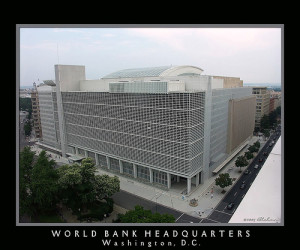Planning and Managing Distance Educaiton Systems: Global Systems
Farhad (Fred) Saba, Ph. D.
Founder and Editor, Distance-Educator.com
Basic characteristics. Global systems are the most complex and perhaps the least understood level of this model, as it is defined by the innumerable political, economic, and cultural relations among nations; relations that are currently revised and redefined in a historically decisive era to establish the post Cold War state of the world. Within the universe of higher education, this systems level include a wide network that US institutions of higher education have built throughout the world in offering educational and consulting services as well as research and development activities. This traditional network is the result of decades of direct cooperation with sister institutions in other countries, as well as establishing branch campuses in Europe, Asia, Africa, and Central and South America. The US government has facilitated and supported the development of such a network over the years through signing bilateral and multilateral agreements with friendly countries. Such agreements have enabled faculty affiliated with US universities to be instrumental in instructional and developmental activities throughout the world under the auspices of various US government agencies as well as the United Nations, or other international  organizations, such as the World Bank, or non-governmental agencies (NGOs). Several factors have determined educational and consulting services by US universities abroad. These include language of instruction and work, cultural characteristics of the host counties, trans-border migration of population especially during civil unrest and war, processes of quality assurance and accreditation and comparative quality of courses between countries of the world.
organizations, such as the World Bank, or non-governmental agencies (NGOs). Several factors have determined educational and consulting services by US universities abroad. These include language of instruction and work, cultural characteristics of the host counties, trans-border migration of population especially during civil unrest and war, processes of quality assurance and accreditation and comparative quality of courses between countries of the world.
Since the 1990s and the rise of economic globalization, educational institutions have had to reexamine their traditional network and redefine it to adjust to the emergence of formerly under-developed countries that have been joining the rank of countries with emerging developed economies. The best examples of such countries with major global economic impact are China and India. However, countries, such as the Philippines, Indonesia, and Malaysia, as well as Eastern European countries are also on the road to development to assume new roles in outsourcing, or offering advanced manufacturing, software development and other similar services.
Key personnel – Professionals at this level include directors and staff of international bodies such as the World Bank, UNESCO, and similar organizations that fund projects in different countries of the world, support international education conferences, set and maintain standards in global telecommunications, postal, aviation and other services that transcend national borders.
Since the 1970s, large scale distance education programs were offered in developing countries to provide educational opportunities to school aged children and young adults who would be deprived of education otherwise because of lack of qualified teachers, and the necessary infrastructure, such as school buildings.
Impact on Other System Levels – At this systems level educators involved in planning for their institutions should be concerned about trends and developments in emerging economies that would increase the need for higher education among their young population. Major international organizations, such as UNESCO, the International Telecommunication Union and the World Bank, which discuss and set policy recommendations for trans-border educational activities, or fund major projects in different countries of the world also have a decisive effect on international educational activities of the US-based institutions of higher education. As a new configuration of relationships among nations is still emerging to define the post Cold War era, this system level will remain unstable and volatile, and as such can have a major disruptive influence on other system levels.
Since the 1970s, large scale distance education programs were offered in developing countries to provide educational opportunities to school aged children and young adults who would be deprived of education otherwise because of lack of qualified teachers, and the necessary infrastructure, such as school buildings. Invariably these programs were patterned after projects offered in Britain or the United Sates. In the bi-polar world of the time, critics depicted such programs as lacking local cultural characteristics at best and a form of cultural imperialism imposed by Western countries at worst. The ideal for such critics was the development of an indigenous pedagogy, which was based on culturally and environmentally relevant science and technology. Some extremists even called for development of culturally relevant universal disciplines, such as, mathematics! They conveniently ignored fact that various philosophers from different eras and parts of the world contributed to the growth of universal disciplines, such as, geometry, and mathematics. It seems that this dichotomous thinking was a necessity by product of of a bi-polar world which pitted the Union of the Soviet Social Republics against the United States and its post-cold war allies in NATO. The Multipolar world that has emerged after the Cold War offers a unique opportunity for countries and regions of the world, which were entangled in the conflicts of the Cold War, to explore the need for and feasibility of developing indigenous pedagogies and culturally relevant science and technology. Alternatively, scholars in these countries could contribute to the development of universal knowledge as they did in the pre-modern and pre-Cold War era. In the latter scenario it would be demonstrated that the East-West and North-South dichotomies in national development theories have been by products of the Cold War and the necessity of a bi-polar conflict between the US and the USSR and not a requirement for making genuine contributions to the advancement of science and technology worldwide.
The influence of these systems levels is present in decision making for the future of educational organizations no matter how large or small they are. Often, planners limit their effort to one systems level without considering the ramifications of the decision they are about to make on all the other systems levels. For example, in so many consulting meetings the discussion revolves around which hardware systems to purchase for a department or which software systems to adopt for a college without considering how such a decision may influence all the other systems levels. Also, it is rarely taken into consideration when the change has been made to the hardware or software systems of the department or the college how such a change is going to be affected by all the other system levels. To develop a holistic model of your organization it is best that you map out the entire system based on the model presented here.








